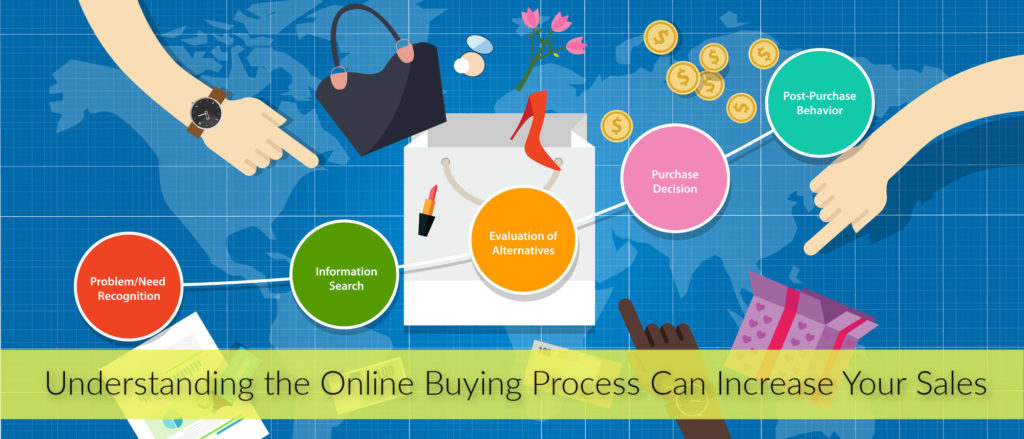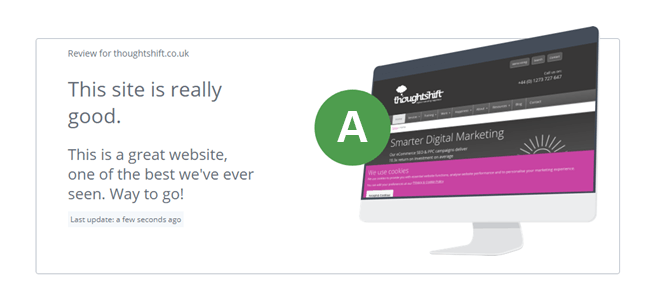
Most marketers don’t give a lot of thought to the online buying process of their customers / readers.
That’s a shame because — whether you’re writing landing pages, eBay, or Amazon product listings, blog posts, social media posts, or practically any other type of copy/content — lending due attention to the consumer buying process can dramatically impact how others respond.
What Is the Marketing Buying Process?
And where does your customer fall within it? How can you use it to help bring your customer to the point-of-purchase?
Typically, the buying process is simply a set of stages in a decision-making process that a consumer or business representative goes through when purchasing. The buying process applies to both online and retail transactions.
Each and every one of us goes through some sort of buying process when we make a purchase. At times the process is long and labored — as when buying a new computer. At other moments it happens almost without thought — when buying a box of your favorite cereal, for instance. But make no mistake… it does happen.
Generally speaking, the buying process consists of five steps (although there can be more).
Those products/services that are:
- New to the market
- New to your customer
- Are very expensive
… will require a longer period of consideration in each phase.
Products/services that:
- Are familiar
- Have market longevity
- Cost very little
… will require a shorter (even instantaneous) process.
The 5 Steps of the Buying Process for Marketing
Step 1 — Need/Want Recognition
During this stage, buyers realize they want or need something. They recognize that they have a problem or a desire, and they choose to find a solution. If this need or want is something along the lines of lunch, the buying decision can be made relatively quickly, without much thought of the actual buying process. Hunger is a quick problem to solve, most options are familiar to buyers, and the cost is usually low.
If the need or want is a new car, however, the actual buying decision can take weeks or months. There is a greater risk, new models and features come out all the time, the cost is high, and the possibility of making a mistake when buying is great.
Step 2 — Information Search
Once the choice has been made to fill a need or want, your customer or reader begins to search for information in order to make a quality decision that is in his/her best interest. Phone calls might be made and websites may be visited. Offer some way for the customer or reader to remember you, including:
Free samples, complimentary consultations, email series, test drives, and other means of trial work well to guide your customer or reader through the information search stage and on to the evaluation and purchase stages.
Blog posts are excellent during this phase because — if written correctly — they can provide high-quality information without being perceived as salesy or pushy. You can include examples, how-to’s, case studies, and more.
Content and blog posts also have the advantage of being bookmarked and/or shared socially.
Step 3 — Evaluation
After your customers have collected all the information they feel is necessary, they begin to evaluate their options and narrow their choices until they finally pick the one thing that they are comfortable with, and that they can afford.
This is the time to follow up with your customers. Do they need additional information in order to choose? Did they have problems with the free sample that can be corrected? Your presence during the evaluation stage is important, so do your best to retain customer contact information in order to gently offer any additional details the buyer/reader might need. (Nobody likes a hard sell, or to be pushed into buying.)
Whether you’re writing for your site or blog posts (or both), include:
- Comparisons
- Differentiating factors
- Specifications (if applicable)
- Other details that will set you apart from the competition
As customers/readers evaluate their options, you want them to clearly see why they should choose you.
Step 4 — Purchase
Once the customer has evaluated all the information, she completes the purchase.
To help consumers, make certain your shopping cart or telephone process is easy to navigate without glitches. People who are confused or frustrated don’t buy.
Step 5 — Cognitive Dissonance (Post-Purchase Anxiety)
While customers may think they chose the best solution when they purchased, many times they later experience cognitive dissonance, a.k.a. buyer’s regret. They might:
- Second-guess their decision
- Begin to feel uncomfortable about how much they have spent
- Wonder whether they really need the product/service, etc.
This is where trial periods, guarantees, and/or warranties come into play.
Customers will have more confidence in their decision, even after it is made, if they know they aren’t stuck with their purchase. Having a guarantee to fall back on gives them the comfort to know that — should something go wrong — they won’t be left stranded.
Generally speaking, a guarantee is a psychological support rather than a literal one. Most customers never take advantage of guarantees … they don’t think they need to. However, if a guarantee wasn’t offered, the anxiety of feeling all alone could overcome many buyers and persuade them to ask for a refund.
Throughout your copy/content-writing stages, blatantly mention or gently allude to any guarantees or warranties you provide. The supportive assurance can significantly reduce your refund rate.
Understanding each step in the online buying process can help you structure your sales and marketing materials so they cater to the customer. Take the time to consider what your customer goes through when making the choice to buy, and alter your business accordingly.
In doing so, you’ll increase your chances of making more sales and landing more satisfied customers.
Related Blog Posts You’ll Love
Building Content Marketing Funnels with Specific Goals
Getting Inside the Mind of Your Target Audience Can Lead to More Sales






